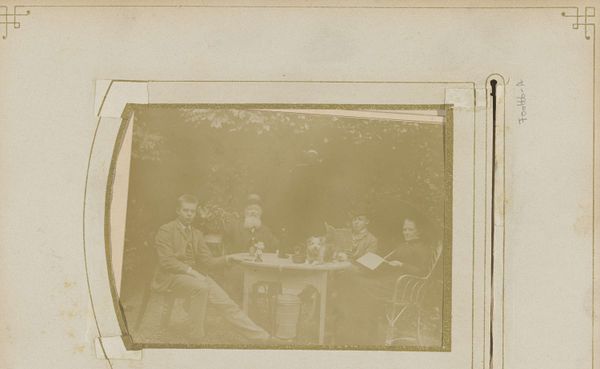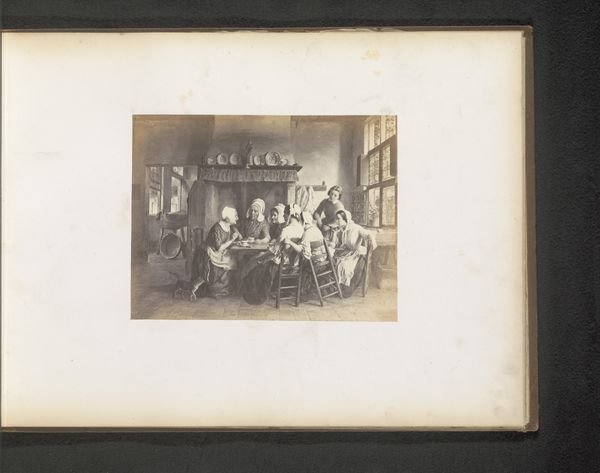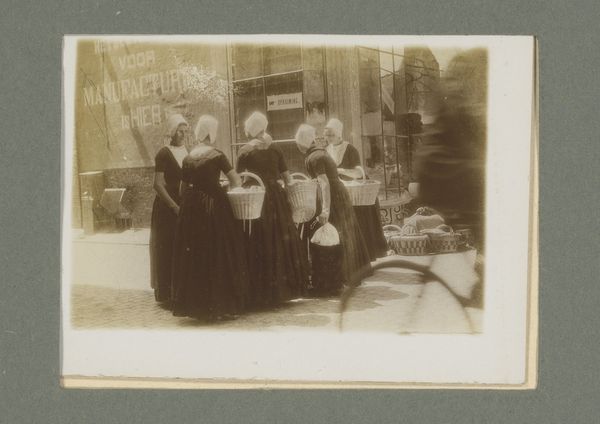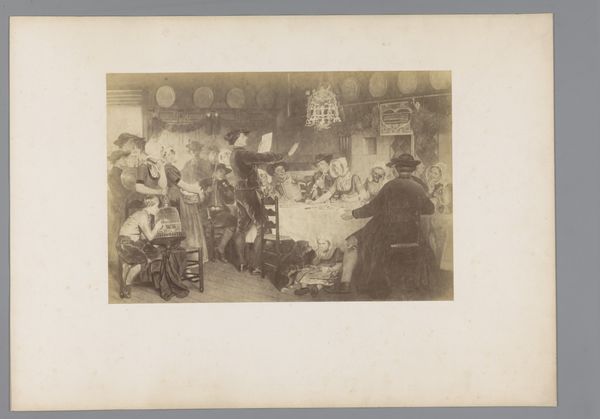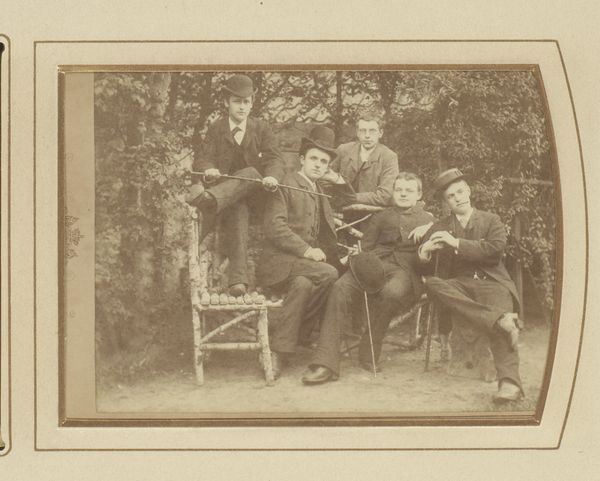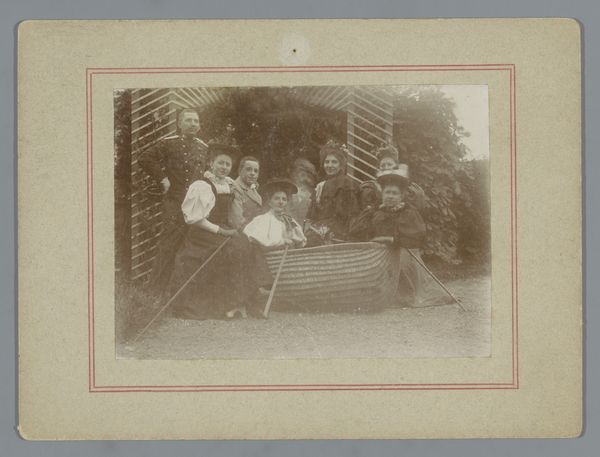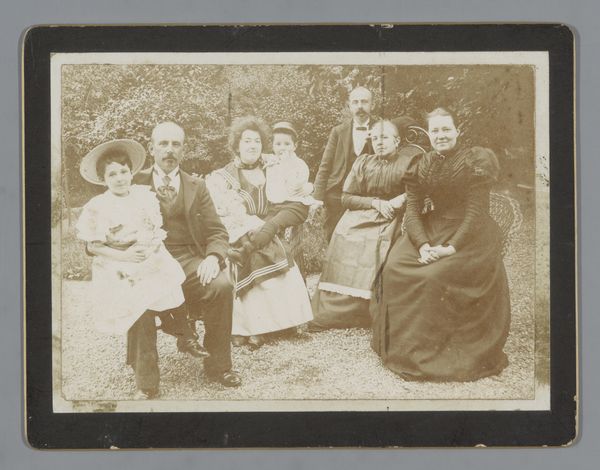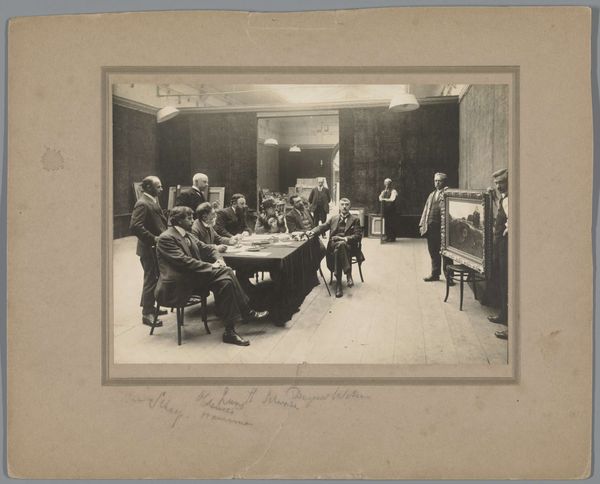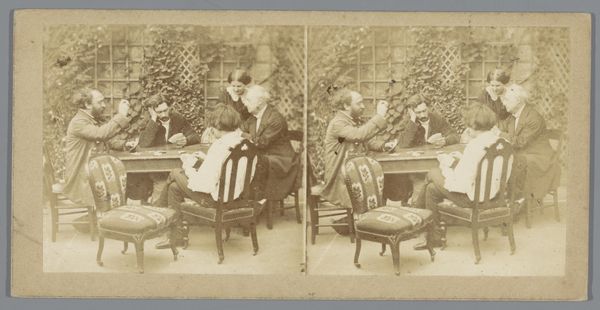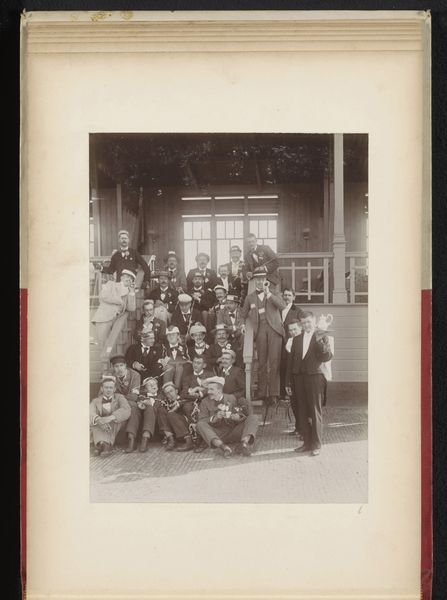
Groep leden van het Amsterdamsch Studenten Corps op een terras, bij avond c. 1897
0:00
0:00
nicolaasschuitvlot
Rijksmuseum
photography
#
portrait
#
pictorialism
#
photography
#
genre-painting
Dimensions: height 170 mm, width 223 mm
Copyright: Rijks Museum: Open Domain
Editor: This sepia-toned photograph, titled "Groep leden van het Amsterdamsch Studenten Corps op een terras, bij avond," by Nicolaas Schuitvlot, made around 1897, captures a group of students relaxing on a terrace. It really feels like a candid moment frozen in time. What draws your eye to this photograph? Curator: Considering it's a photograph, I'm immediately interested in the labor behind its production. The Pictorialist movement, which this piece flirts with, often involved extensive darkroom manipulation – hours spent refining the image. What kind of social rituals were facilitated and reinforced by the material process of photography in the late 19th century? How was photography being consumed at the time? Editor: That’s interesting. So you're thinking about not just the image itself, but also the entire photographic process and its role in society back then. Curator: Exactly. What was the societal function of images like this at this time? Also, look at the materials -- paper, developing chemicals, even the camera itself. How were these commodities tied to burgeoning industrial capitalism? Did the availability and cost of those materials shape who could be depicted and who was behind the camera? Editor: I see what you mean. The people in the photograph, members of a student corps, probably had greater access to resources, including photography. And the fact that they commissioned or participated in such portraits suggests a certain self-awareness and investment in projecting a specific image of themselves. Curator: Precisely! And even the "candid" nature you mentioned isn't truly candid. It is staged, with some members turning their heads to the photographer's labor, demonstrating self-awareness of being photographed, or rather, constructed by photography, or more simply put, being commodified into the product being sold in photography shops. What can this tell us about class and identity at the time? Editor: That's made me think about this photo in a whole new light, as less about capturing a natural moment and more about the production of social standing, a status symbol. I suppose, looking back, I feel less interested in these individuals and more fascinated with how photography can construct these ideas. Curator: Exactly! It becomes a study of the interplay between image, production, and social context.
Comments
No comments
Be the first to comment and join the conversation on the ultimate creative platform.
